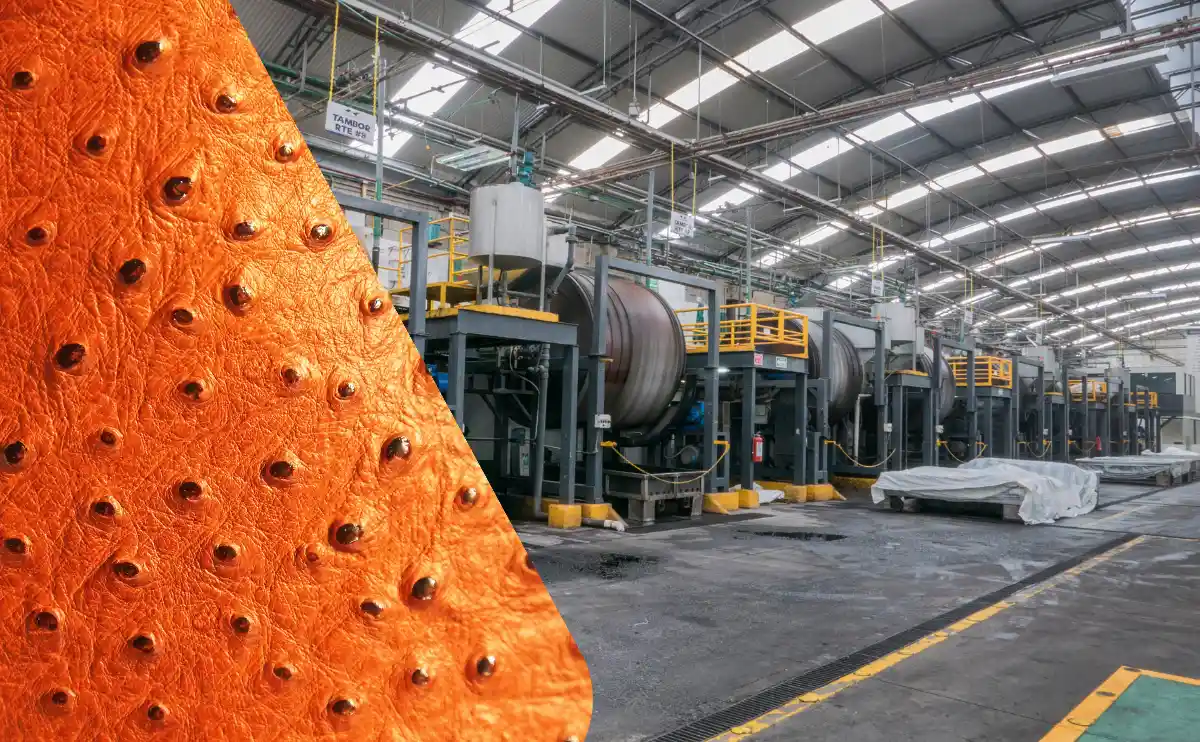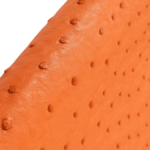How Is Ostrich Leather Made?

Ostrich leather is one of the most luxurious and durable leathers. But have you ever wondered how ostrich leather is made?
This article will explain the complete process of ostrich leather production, from raw hide to dyed leather. Whether you are a designer, a manufacturer, or a buyer, this guide will answer the most common questions, especially those looking for genuine leather.
What Makes Ostrich Leather So Special?
Before understanding how it is made, let’s see why ostrich leather is desirable.
Ostrich leather is popular for its:
- Distinctive claw pattern
- Soft yet durable texture
- Natural oils that prevent cracking
- Versatility in fashion, upholstery, and luxury goods
However, producing such top-notch leather is not easy and requires meticulous and professional work.
Where Does Ostrich Leather Come From?
The largest producer of ostrich leather is South Africa. Countries such as Namibia, Botswana, and several other areas in the United States also raise ostriches for their skin and meat.
The skin is collected from adult ostriches, usually around 12 to 14 months of age, when the skin is fully grown and thick enough for tanning.
Step-by-Step: How Ostrich Leather Is Made
Let’s break it down into key stages:
1. Skinning the Ostrich
First, the skin is carefully separated. The most valuable part of the skin is the back, known as the "crown," where the feather follicles are concentrated. This part is where the pattern of the ostrich leather originates.
If this step is not done carefully and professionally, damage may occur to the skin, which will reduce the value of the ostrich leather.
2. Washing and Soaking
At this step, the raw ostrich skin is washed to remove all dirt and blood from the skin. After that, It is soaked in water and special chemicals to prepare it for tanning. This is an important part because it affects the texture and final color of the ostrich leather.
3. Tanning Process
This is the heart of the ostrich leather production process. In this Step, raw hide is transformed into leather.
Factories use the following methods to tan ostrich skin:
- Chrome tanning: This method makes the leather softer and more vibrant.
- Vegetable tanning: This method is environmentally friendly and strengthens the ostrich leather.
We will explain the difference between these two types of tanning in a separate article, but which method is better depends on our use of ostrich leather and other factors.
4. Dyeing and Coloring
After tanning, the leather is dyed. Ostrich leather can be dyed in any color we desire.
To produce top-quality leather, tanneries must ensure that the dye penetrates evenly throughout, especially around the edges where the color can vary.
5. Drying and Conditioning
At this stage, the dyed leathers are slowly dried in tunnels or rooms where the air and temperature are controlled. After that, softeners are added to the leather to make the leather softer.
This careful handling helps maintain the quality of the ostrich leather and increase its lifespan.
6. Finishing and Grading
In the final step, the hides are:
- Trimmed to remove imperfections
- Graded by quality (Grade A is the best)
- Stamped and cataloged for sale
Finishing may also include applying protective coatings or embossing, depending on customer needs.
How Long Does the Ostrich Leather Production Take?
Depending on the tanning method, thickness, and items ordered, producing ostrich leather from raw hides can take 1 to 4 weeks.
Top-tier manufacturers like LeatherBulk follow strict timelines and quality standards to ensure consistency in the production process.
Is the Ostrich Skin Tanning Process Sustainable?
Yes - at least when done correctly and with quality. Many modern tanneries:
- Recycle water and chemicals.
- Use biodegradable agents
- Follow ethical sourcing practices.
Buyers receive high-quality materials by choosing suppliers who prioritize sustainability without harming the environment.
How Can You Tell High-Quality Ostrich Leather?
Not all ostrich leather is created equal. Look for the following:
- A uniform pattern
- A soft but firm texture
- A smooth dyeing
- No visible cracks or stains
High-quality leather looks good, lasts longer, and adds value to the finished product.
Final Thoughts
Knowing how ostrich leather is made will help you:
- Make smarter purchasing decisions.
- Spot counterfeit or substandard materials.
- Understand why prices are high.
When you buy from a trusted source like LeatherBulk, you’re not just getting a product; you’re investing in a well-crafted piece of nature.
Al Quoz Industrial Area, United Arab Emirates




